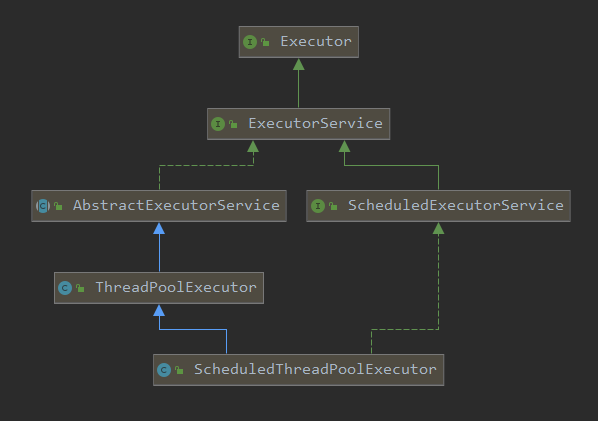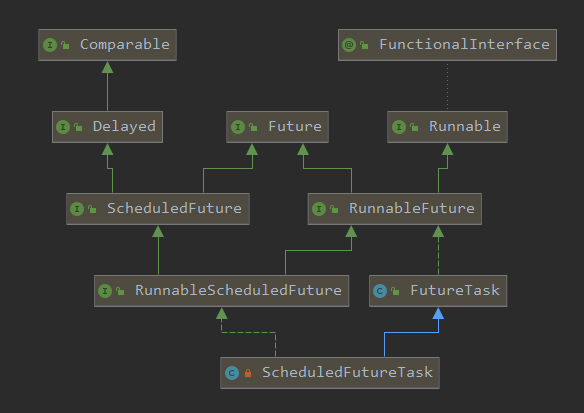ScheduledThreadPoolExecutor使用
int initialDelay = 5;
System.out.println(Thread.currentThread().getName() + " " + TimeUnit.MILLISECONDS.toSeconds(System.currentTimeMillis()));
ScheduledExecutorService executorService = Executors.newScheduledThreadPool(1);
//以上一个任务开始的时间计时,period时间过去后,检测上一个任务是否执行完毕,如果上一个任务执行完毕,则当前任务立即执行,如果上一个任务没有执行完毕,则需要等上一个任务执行完毕后立即执行。
executorService.scheduleAtFixedRate(()->{
System.out.println(Thread.currentThread().getName() + " " + TimeUnit.MILLISECONDS.toSeconds(System.currentTimeMillis()));
try {
TimeUnit.SECONDS.sleep(3);
} catch (InterruptedException e) {
e.printStackTrace();
}
},initialDelay,5, TimeUnit.SECONDS);
//以上一个任务结束时开始计时,period时间过去后,立即执行
executorService.scheduleWithFixedDelay(()->{
System.out.println(TimeUnit.MILLISECONDS.toSeconds(System.currentTimeMillis()));
try {
TimeUnit.SECONDS.sleep(3);
} catch (InterruptedException e) {
e.printStackTrace();
}
},initialDelay,5, TimeUnit.SECONDS);
ScheduledThreadPoolExecutor原理
ScheduledThreadPoolExecutor 底层实现为ThreadPoolExecutor 和自定义 DelayWorkQueue延时队列结合使用,ThreadPoolExecutor 原理已在前面线程池原理与源码剖析中有详细说明,延时队列原理在Queue阻塞队列中详细说明。
大概原理:将任务封装到一个既实现Runnable接口又继承Delayed类的ScheduledFutureTask类中,放入延时队列中,再调用我们的ThreadPoolExecutor 中的executor方法开启线程,调用ScheduledFutureTask中的run方法,该方法再调用真正任务的run方法,处理完真正任务的run方法后,计算下次任务的执行时间,再次将ScheduledFutureTask放入延时队列,回到调用我们的ThreadPoolExecutor 中的executor方法的逻辑,继续往下执行。


